If you’re looking to roof your house yourself, a framing nailer is an essential tool that you’ll need to have in your arsenal.We’ll address some of the most popular questions about framing nailers and roofing in this post, as well as provide product evaluations and helpful hints on how to use them. So whether you’re a beginner or a pro, read on for everything you need to know about using a framing nailer for roofing!
Is it Possible to Use a Framing Nailer for Roofing?
You can use a framing nailer for roofing purposes. In fact, many people use them for both roofing and framing because they are so versatile. Although a framing nailer is an effective tool for roofing, there are a few things you need to keep in mind.
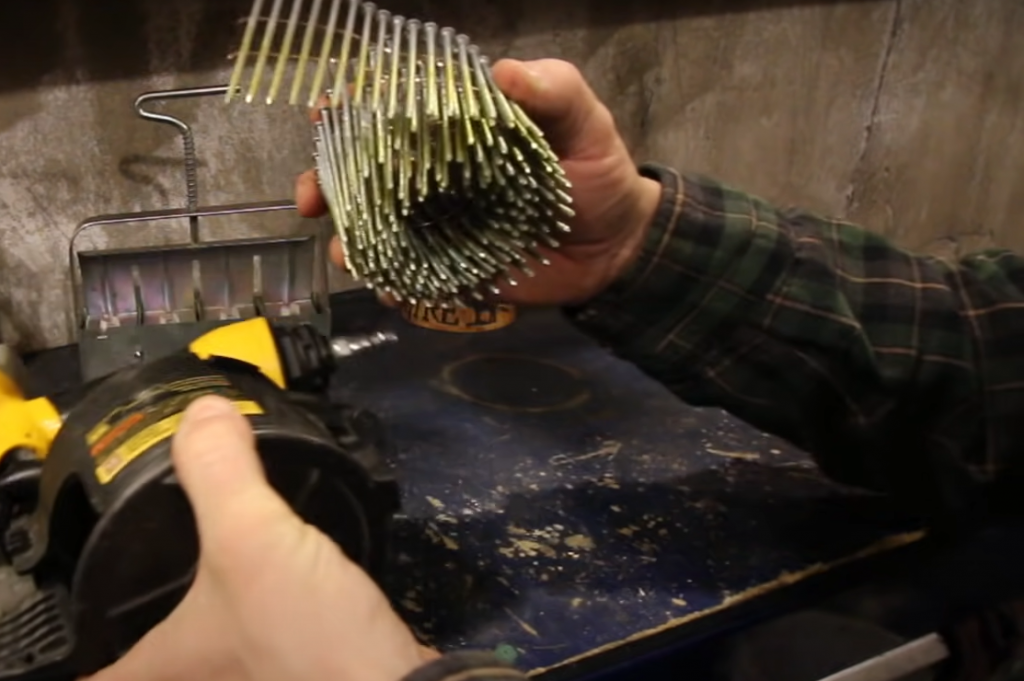
To start, ensure you have the right nails for your gun. Second, you need to be careful not to over-drive the nails, which can damage the roofing material. And finally, always practice safety when using any power tool!
They will be able to advise you on the best tools and techniques for the job. [1]Difference In Nail Holding Capacity
There are two types of framing nailers, coil and stick. Coil nailers can hold up to 300 nails at a time, while stick nailers typically only hold 100. This is an important distinction to make because it will affect how often you have to stop and reload your nailer. If you’re working on a large project, or one that will require a lot of nails, then a coil nailer will be your best bet. However, if you’re only doing a small job, or one that won’t require many nails, then a stick nailer should suffice.
The size of the nails a framing nailer can hold is another distinction between these types of machines. Coil framing nailers can accommodate nails ranging from 0.113 to 0.131 inches in diameter. This is important to keep in mind when you’re choosing a framing nailer, as you’ll want to make sure that the one you select can accommodate the size of nails you’ll be using. [2]
Difference In The Nails
The first and most important difference is the nails that are used. Framing nails are much larger in diameter than roofing nails. They also have a much thicker shank. This makes them much stronger and less likely to bend when driven into harder woods. Roofing nails have a smaller diameter and a thinner shank. Softwoods, asphalt shingles, and other delicate materials are more suitable for them.
Another difference between framing nails and roofing nails is the head of the nail. Framing nails have what is called a clipped head. This means that the head of the nail is slightly smaller than the diameter of the shank. Roofing nails have what is called a full round head. This means that the head of the nail is the same diameter as the shank.
The last way these two types of nails differ is their shape. Framing nails have a blunt point while roofing nails have a sharp point. The sharp point on roofing nails helps them penetrate softer materials like asphalt shingles better than framing nails can.

Roofing nailers are also known as coil nailers because they use coils of nails instead of individual straight strips like most other nail guns. This means that they can hold a lot more nails at one time, which is handy when you’re working on a large project. Roofing nailers also have a magazine that slopes downward. This allows gravity to feed the nails into the gun more smoothly and prevents jams.
Most roofing nailers will use either wire collated or plastic collated nails. Wire collated nails are less expensive but they can cause more wear and tear on the gun. They’re also more likely to leave marks on the roofing material. Plastic collated nails are more expensive but they don’t damage the gun as much and they don’t leave marks on the roof.
If you’re going to be doing a lot of roofing, it’s worth investing in a good quality roofing nailer. But if you only need to do a small amount of roofing, you can probably get away with using a framing nailer. [3]
Difference In Their Durability and Strength
The first thing you need to know is that a regular framing nailer is not as durable as a roofing one. This is because they are made with different materials and designed for different purposes. For example, a regular framing nailer will have plastic parts that can break easily when dropped, whereas a roofing nailer will have metal parts that are much more durable. In terms of strength, a roofing nailer is also much stronger than a regular one because it has been designed to drive nails into tougher materials like asphalt shingles.
Another key difference between these two types of nailers is the size of the nails they can accommodate. A regular framing nailer can usually accommodate nails that are up to three inches long, whereas a roofing nailer can accommodate nails that are up to four inches long. This is because the longer nails are needed to penetrate the thicker materials used in roofs.
Finally, you need to be aware that roofing nailers tend to be much more expensive than regular framing nailers. This is because they are made with higher quality materials and have more features that make them better suited for roofing applications. For example, some roofing nailers come with an air compressor so you don’t have to worry about keeping your own separate one on hand. Others come with a built-in ladder hook so you can easily hang it off the side of a ladder when you’re working on a pitched roof. [4]
FAQ
Can you use a regular nail gun for roofing?
The answer is no. You need a specific type of nail gun known as a framing nailer for roofing projects. This is because regular nail guns are not powerful enough to penetrate through the thick material used in roofing. In addition, regular nails are not long enough to provide a secure hold on the roofing material.
Framing nailers for roofing are designed to be much more powerful than regular nail guns. They also use longer nails that are specifically designed to penetrate through thick materials like roofing shingles.
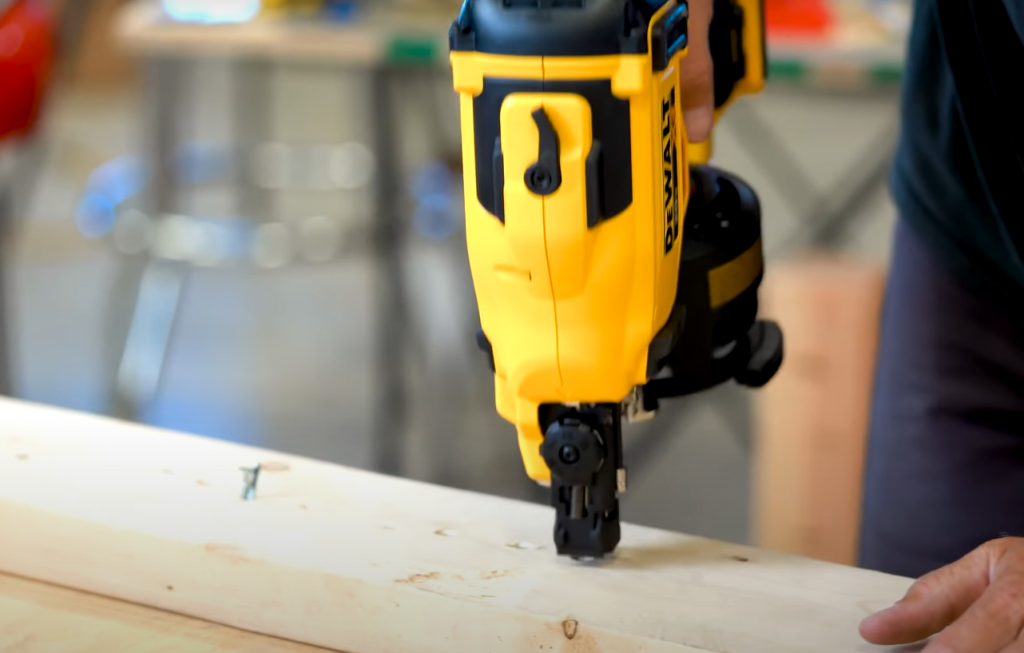
Below are some things to consider when choosing a roofing nailer. First, you need to make sure that the nail gun is powerful enough to penetrate through the roofing material. Second, you need to choose a nail gun with a long enough barrel to reach the nails into the center of the shingle. Finally, you must ensure that the nails are suitable for the roofing material you’re using.
What type of nailer is used for roofing?
A coil-type nailer and a stick-type nailer are two types of roofing nailers available. Coil-type nailers are the most common type of roofing nailer. The guns have a magazine that can hold 300 nails and are fed by coils of nails. Stick-type nailers are less common, but they’re growing in popularity because they’re lighter and easier to maneuver. Stick-type nailers use sticks of nails that are fed into the gun, and they have a magazine that holds up to 200 nails.
Can you use a nail gun for shingles?
The answer is yes, you can use a nail gun to install shingles. In fact, using a nail gun can make the process go faster and be less labor-intensive. You can use a nail gun for your roofing project, but there are a few things you should know first.
For starters, you’ll need to choose the right type of nails for your project. There are special nails for roofing that have been designed for this specific purpose. Make sure you get the right ones so that your roof will be properly secured.
Next, you’ll need to adjust the pressure on your nail gun. This is important because if the pressure is too high, it could damage the shingles. Conversely, if the pressure is too low, the nails won’t go in all the way and could come loose over time.
Finally, you’ll need to be extra careful when using a nail gun on your roof. It’s easy to accidentally hit something you shouldn’t and cause damage. Pay close attention to what you’re doing and take your time to avoid making any mistakes.
What kind of nailer is used for roof sheathing?
There are two types of nailers that can be used for roof sheathing: a coil-type nailer and a stick-type nailer. Coil-type nailers are more common because they tend to be less expensive and easier to use. Stick-type nailers are best suited for larger projects or projects that require a lot of nails.
Either type of gun will work, it’s important to choose the right one for the job. For example, if you’re working on a small project, a coil-type nailer might be the better choice because it’s lighter and easier to maneuver. If you’re working on a large project, however, a stick-type nailer will probably be your best bet because it can hold more nails and is less likely to jam.
When it comes to roofs, there are a few things to consider. First, always make sure the gun is properly oiled before use. Second, be aware of your surroundings and make sure you’re not pointing the gun at anyone. And third, when firing the gun, always start from the bottom and work your way up. This will help prevent any accidental damage to the roof.
What is better for roofing nails or staples?
This is a common question that we get here at Nail Gun Depot, and the answer may surprise you. While it’s true that both nails and staples have their benefits, we generally recommend using nails for roofing applications. Here’s why:
Nails are more likely to penetrate through asphalt shingles and other roofing materials than staples. This means that they’ll provide a more secure hold, which is important in high-wind areas. Additionally, nails are less likely to pop out over time than staples.
Another advantage of using nails is that they can be removed more easily if necessary. This comes in handy if you ever need to make repairs to your roof or replace damaged shingles. Simply remove the old nails with a pry bar and hammer, then install new ones in their place.
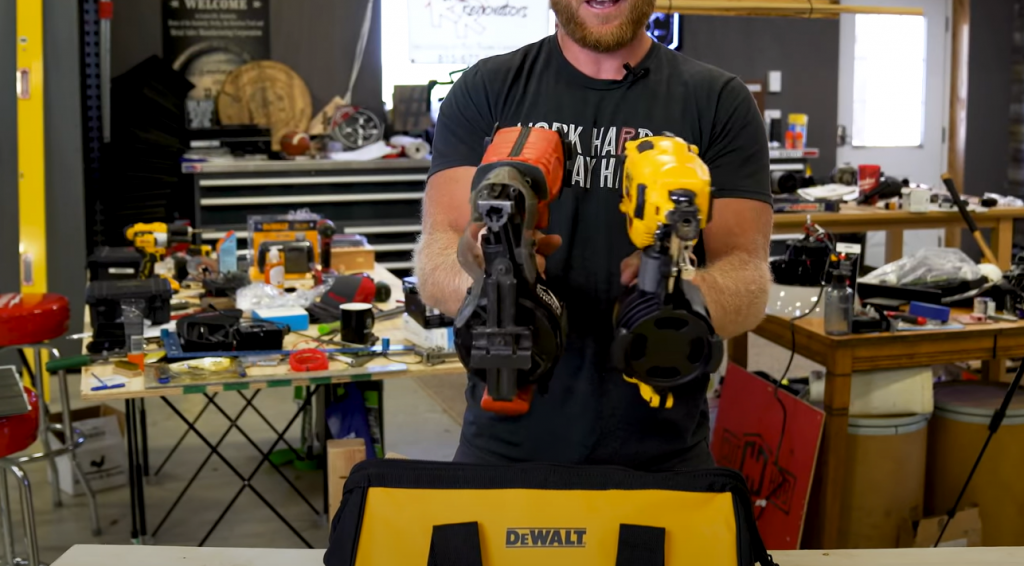
If you’re still on the fence about which type of fastener to use, we recommend doing some research on the different types of nails and staples available. There are a variety of sizes, materials, and coatings to choose from, so you’ll be sure to find the perfect option for your roofing project.
What’s the difference between a siding nailer and a framing nailer?
If you’re working on a roofing project, you’ll need to use a specific type of nailer known as a framing nailer. A framing nailer is used to put nails into thicker pieces of wood, such as the supports that make up a home’s frame. Siding nailers, on the other hand, are meant for thinner materials like siding or trim.
What type of nail gun do I need for plywood?
For the average homeowner, a pneumatic nail gun is going to be the best option. They are powerful enough to get the job done quickly, but not so powerful that they are difficult to control. If you have an air compressor, then you can use an air-powered nail gun. Otherwise, there are battery-operated and corded electric options available.
The most common nail gauges used in pneumatic nail guns are 16-gauge and 18-gauge. For most applications, the smaller 16-gauge nails are better, but if you’re working with harder materials, go for the 18-gauge nails.
When it comes to choosing a specific model of nail gun, there are a few things you should keep in mind. First, consider the size of the nails you’ll be using. Some nail guns are only designed to work with certain sizes of nails. Second, think about how often you’ll be using the nail gun. If you’re only going to be doing occasional projects, then a less expensive model might be fine. However, if you plan on using the nail gun frequently, then it’s worth spending a bit more to get a higher-quality tool.
Finally, make sure to read reviews before purchasing any power tools. This will help you avoid buying a lemon and ending up frustrated with your purchase.
Useful Video: Can you use a framing nailer for roofing
Conclusion
It’s easy to see why a framing nailer is such a versatile and essential tool for any construction worker or DIY enthusiast. By following the tips and advice in this guide, you should be able to use your framing nailer for roofing projects with ease. With its ability to drive nails into even the hardest of materials, a framing nailer is the perfect tool for any job that requires precision and strength. So next time you’re tackling a roofing project, make sure you have a trusty framing nailer by your side.Do you have any tips or advice on using a framing nailer for roofing projects? We’d love to hear from you in the comments below!
References:
- https://www.finepowertools.com/nailers/roofing-vs-framing-vs-siding/#:~:text=You%20can%20use%20a%20framing%20nailer%20for%20roof%20sheathing.
- https://spraygadgets.com/do-you-need-a-special-nail-gun-for-roofing/
- https://dengarden.com/home-improvement/which-type-of-nailer-do-you-need
- https://toolsconcepts.wixsite.com/home/post/framing-nailer-vs-roofing-nailer
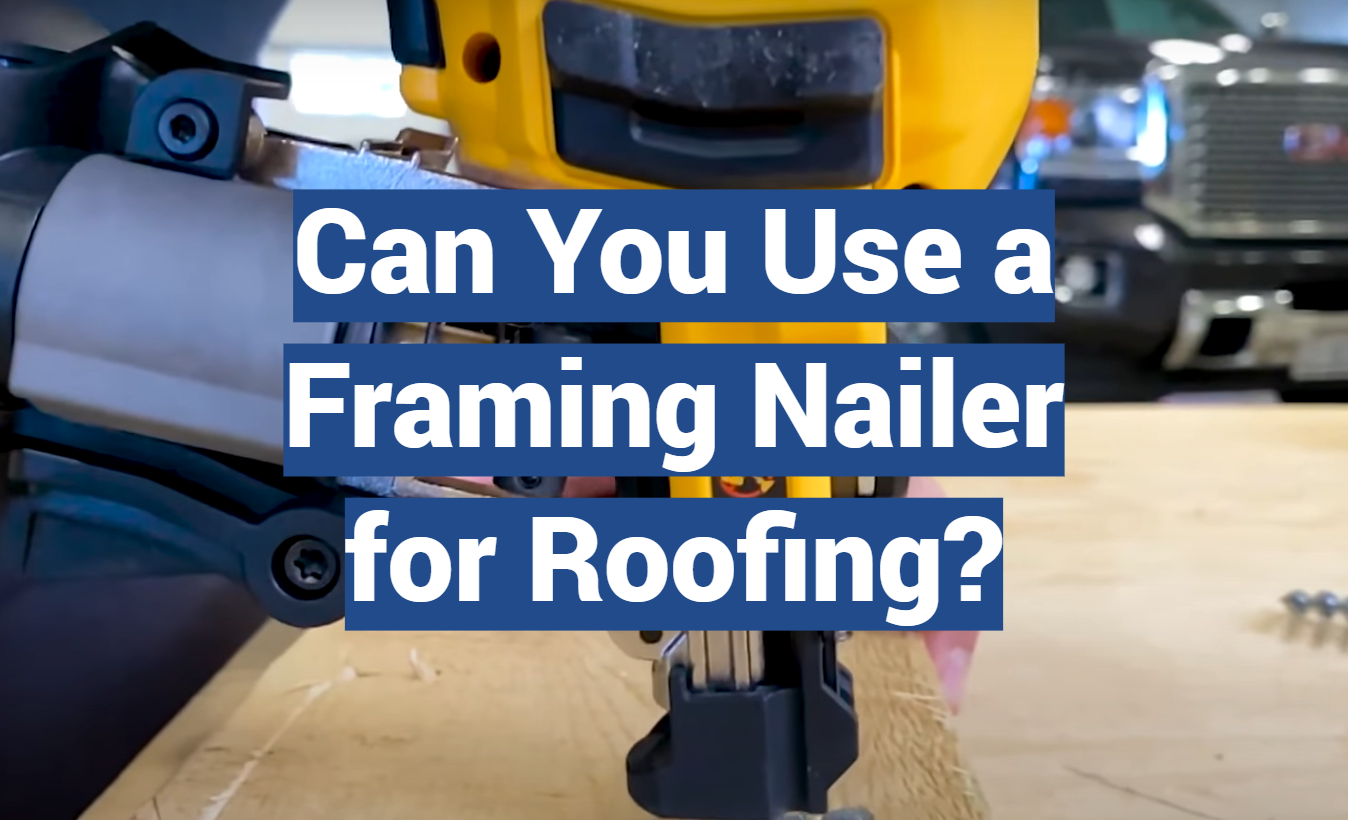

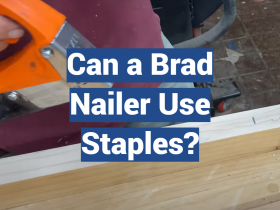
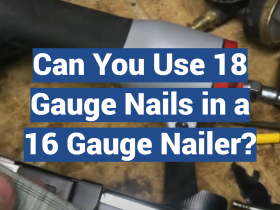
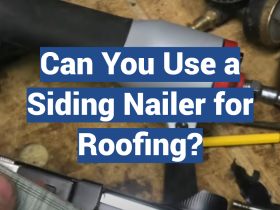
Leave a Reply